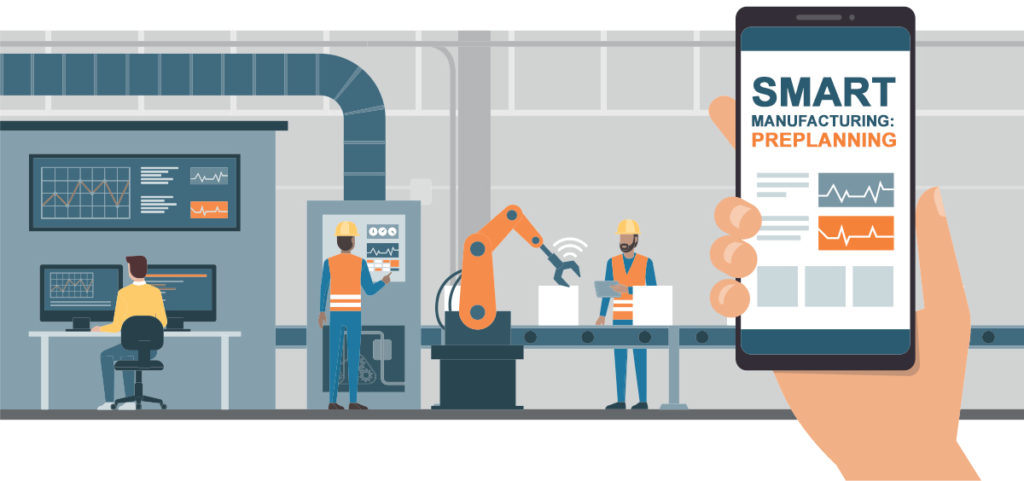Many tout the smart occurring manufacturing revolution, but the truth of the matter is the recent boom of interest in smart manufacturing is more an evolution than a revolution. Improving processes and expanding company reach have always been priorities, and employees have been using technology to address those concerns for decades. However, past technology was limited to taking certain inputs and producing results. Now, with smart manufacturing, company leaders can combine technologies to perform complex analyses and optimize systems with minimal hands-on involvement. This evolution leaves workers free to develop company vision, connect with consumers, and prepare for the next generation of market demands.
Smart manufacturing benefits
Smart manufacturing technology enables constant communication among people and connected devices, allowing manufacturers to
- improve operations by predicting equipment failures,
- create new value by building new revenue streams and improving product quality, and
- address the skilled labor shortage by monitoring multiple machines from a central location and utilizing information sharing to better coordinate activities
Smart manufacturing also helps increase operation speeds, decrease production costs, and improve records for better business analytics. As if this wasn’t enough, smart manufacturing can also address other areas, including worker safety and energy consumption.
Considerations before planning a smart manufacturing transition
Before planning an effective smart manufacturing transition, company leaders must understand which of its many benefits should be their company priorities. A firm understanding of how smart manufacturing can benefit a company usually starts with input from plant managers and other professionals with the best perspectives on company procedures and challenges. Those spearheading the transition should also prepare executives for a lengthy process in which understanding the technology, acquiring the proper perspectives, and even installation are just the beginning steps.
 However long and complicated these steps may seem upon first inspection, they will likely be well-worth the thought process when properly executed. In reality, most company leaders have already taken small steps in their own smart manufacturing transitions. In the past, when a manufacturing engineer or production leader had a manufacturing problem, he or she would take it upon her- or himself to come up with solutions to keep manufacturing processes moving forward. Their solutions were actually the first rudimentary steps toward smart manufacturing. However, manufacturers who really want to take advantage of the many smart manufacturing benefits are going to require cooperation from everyone in the plant from the boardroom to the factory floor.
However long and complicated these steps may seem upon first inspection, they will likely be well-worth the thought process when properly executed. In reality, most company leaders have already taken small steps in their own smart manufacturing transitions. In the past, when a manufacturing engineer or production leader had a manufacturing problem, he or she would take it upon her- or himself to come up with solutions to keep manufacturing processes moving forward. Their solutions were actually the first rudimentary steps toward smart manufacturing. However, manufacturers who really want to take advantage of the many smart manufacturing benefits are going to require cooperation from everyone in the plant from the boardroom to the factory floor.
What to do after deciding to make the move
After realizing how beneficial smart manufacturing could be for the company, identifying key personnel for understanding efficiency issues, and resigning themselves to the time, resources, and energy investments the long process requires, it’s time for manufacturers to sit down and start planning. The market is continually changing, and the increase in mobile and social connectivity has changed both employee and consumer expectations. This “people factor” — along with the staggering growth rate of big data and information interconnectivity — are compelling reasons to start planning a smart manufacturing transition.
